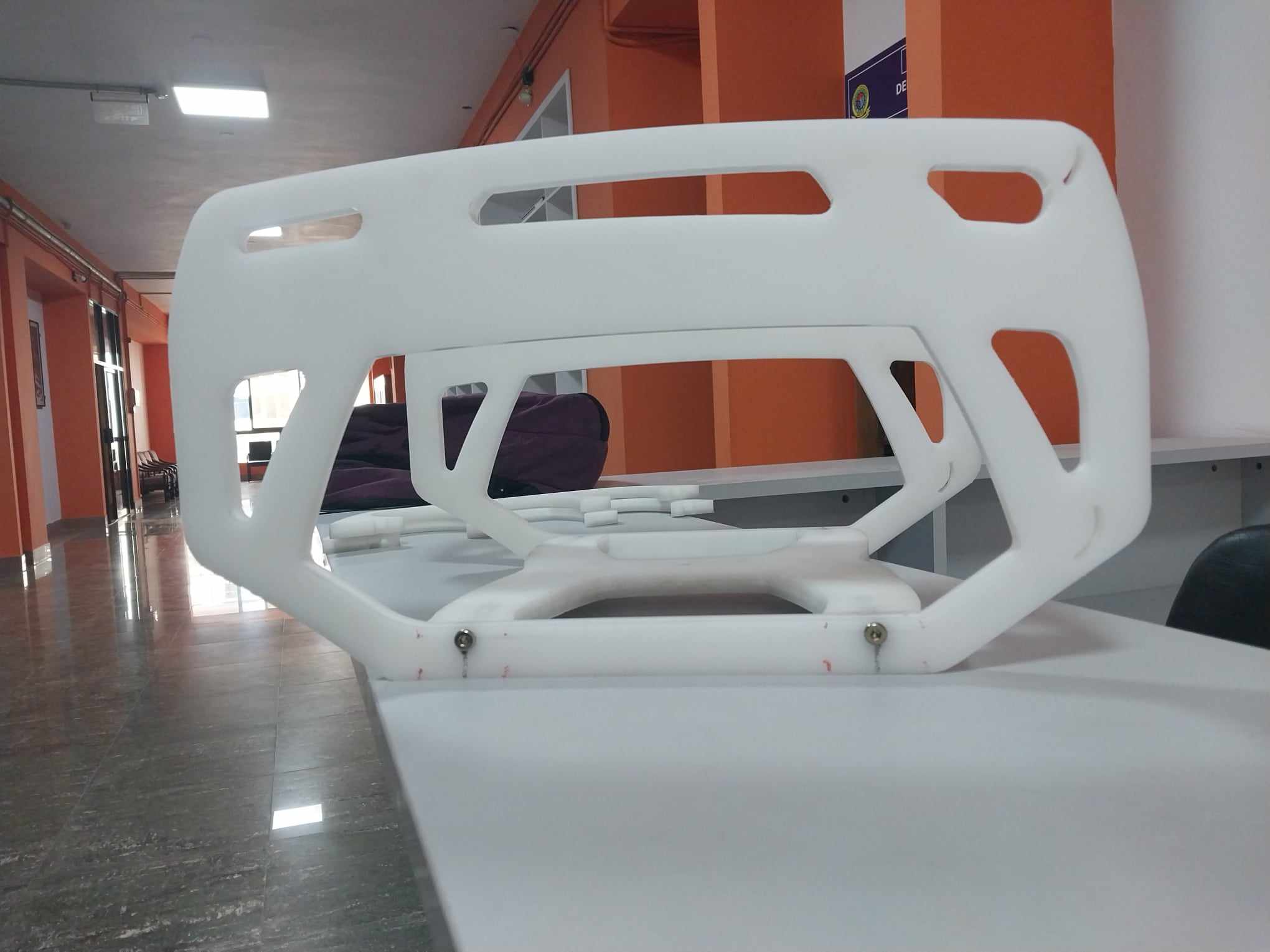In this series of blogs, I’ll demystify the intricate components that make our UROV a marvel. Join me on this journey as, in the first part, I unveil the backbone of our frame – High-Density Polyethylene (HDPE) sheets.
High Density Polyethylene (HDPE) sheets are used as modular frame for TRITON with mounting points for additional watertight enclosure and lights. High-Density Polyethylene (HDPE) is a versatile material that offers a range of properties that makes it well-suited for use as the frame structure of a UROV. In particular,
- Lightweight and Buoyant: HDPE is lightweight and naturally buoyant, ensuring that the UROV remains agile, energy-efficient, and stable on the water’s surface.
- Durability: HDPE is highly durable and can withstand the harsh underwater environment, including exposure to saltwater, pressure changes, and potential impacts.
- Corrosion Resistance: HDPE is resistant to corrosion, guaranteeing the integrity and longevity of the frame structure in saltwater environments.
- Malleability: HDPE’s malleability allows it to be molded into streamlined designs, reducing water resistance and enhancing the UROV’s maneuverability.
- Chemical Resistance: HDPE is resistant to a wide range of chemicals, making it suitable for various underwater conditions.
- Environmental Friendliness: HDPE is eco-friendly, non-toxic, and does not harm the marine ecosystem, aligning with environmental responsibility.
- Cost Efficient: A cost-effective alternative to aluminum and carbon fiber, it delivers the perfect blend of affordability and essential characteristics.
We have used Autocad software to design the layout of the frames and then prepared the 3D model by using the software Rhino. We used CNC milling machine to give required shapes to the HDPE sheets, utilizing Mastercam X7 software for precise and efficient machining. And the final output can be seen herewith.





1 Comment
Rajesh Khanna
Unique choice